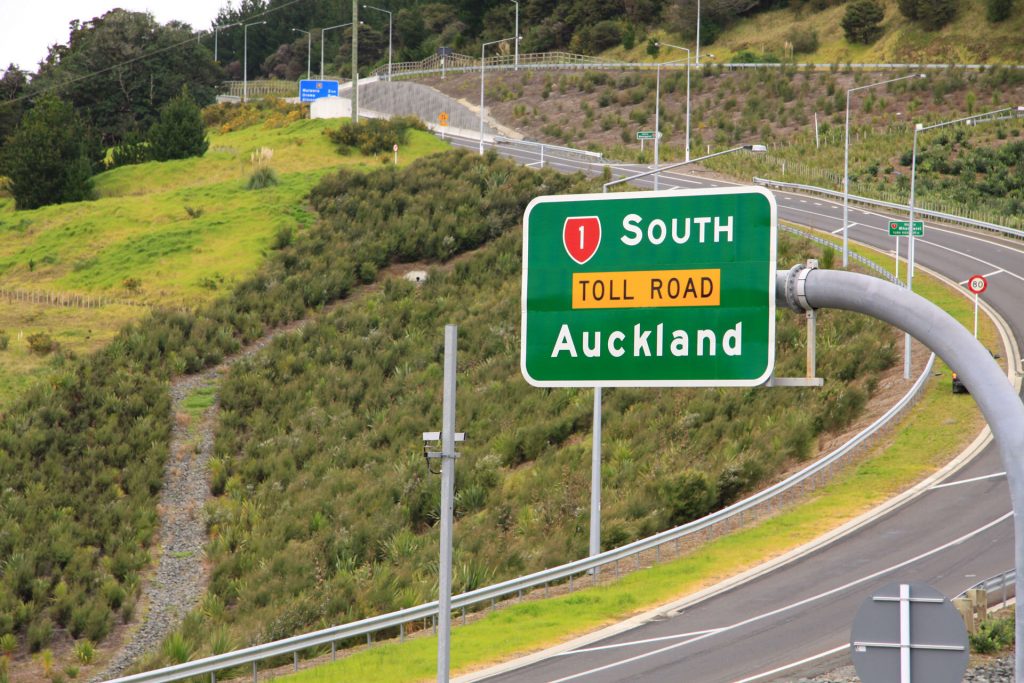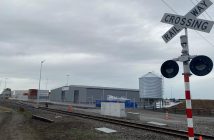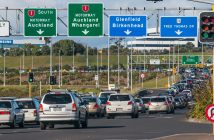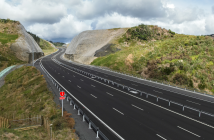While the National Party is promising a ‘Pothole Repair Fund’, the ACT Party has released a far more ambitious roading policy that would utilise tolls to change the way new and existing roads are funded

There is no such thing as a free road. Roads can either be paid for through tolls, or through public taxes. ACT says mechanisms such as toll roads get New Zealand closer to a true user-pays system and ensure that necessary work gets done.
Other countries are well ahead of New Zealand in developing fair, efficient, and cost-effective transport infrastructure. Rather than simply putting up with an always-constrained pot of money, ACT’s policy would welcome private sector financing and expertise to bring these projects forward.
Compared with other high-income countries, New Zealand faces higher costs when it comes to delivering infrastructure projects. Urban and rural motorways, in particular, face a cost premium. The National Land Transport Fund (NLTF), which is the predominant source of transport funding, faces the challenge of meeting demands for large and transformational projects while maintaining and renewing the current network.
Although New Zealand’s transport system is commonly regarded as a user-pays system, the fact is that this model is coming apart at the seams. Electric vehicles are growing in popularity, yet users do not contribute to the maintenance of roads. The Auckland regional fuel tax is charged to drivers but is used to pay for other transport projects unrelated to the maintenance of the roads Aucklanders use.
For a country of a relatively small population, New Zealand suffers from major congestion issues. Congestion costs the New Zealand economy billions of dollars each year. Plumbers who used to be able to do four jobs in a day can now only do three because they’re stuck on Auckland’s Southern Motorway. Freight that used to take six hours to get from Lyttelton Port to Queenstown might now take seven. Across five million New Zealanders, these costs add up.
New Zealand’s transport network suffers dual problems: the network is straining under the weight of population growth, and the costs for delivering new projects are high.
New Zealand’s few existing toll roads are making a difference
Toll roads are a promising option for easing congestion issues and recovering the high costs of delivering transport infrastructure.
New Zealand currently has three toll roads: the Auckland Northern Gateway, the Tauranga Eastern Link, and the Tauranga Takitimu Drive. Penlink road north of Auckland will also be tolled when the new route is completed.
Road tolling enables the road operator (in these cases, Waka Kotahi) to collect revenue that contributes to the planning, design, supervision, construction, maintenance, or operation of a new road. The decision on whether a new road can be tolled is based on several criteria, including whether there is a feasible, untolled alternative route available.
The three existing toll roads have delivered significant benefits for New Zealand drivers and the surrounding communities. Waka Kotahi’s operating report for the Northern Gateway Toll Road (NGTR), produced five years after opening, found that 80% of network traffic was using the toll road compared to free alternatives, exceeding predicted volumes. The tolled NGTR offers a distance saving of 5-6km and time saving of 8-10 minutes compared to the untolled route.9 With 7.7 million vehicles on the route in 2022/23 that’s 1.23 million hours in saved travel time annually, translating into a monetary value of $33.6 million in benefits.
The Tauranga Eastern Link (TEL) is also considered a success with a 3km distance saving and an average nine minutes in time saved, or up to fifteen minutes at peak times. With 4.5 million annual vehicle counts that’s at least 675,000 hours saved, with a value of $17.66 million. The new tolled road is also far safer. Prior to the TEL being built the existing stretch of road had an average of 1.8 fatalities each year. In the six years after completion of the TEL, there has been one fatality – or 0.17 in annual terms.13 Serious injuries have also dropped from 38 to one over the same time period, reflecting a significant reduction in crashes from a safer highway.
The Tauranga Takitimu Drive offers a distance saving of 0.5km and time savings of around three minutes. With 5.1 million vehicles on the route in 2022/23, it saved 255,000 hours in driver time – or an approximate $6.67 million in value of time saved.
Building this kind of infrastructure can occur faster through public-private partnerships with immediate tangible results for the safety and wellbeing of New Zealanders.
Toll roads are utilised far more overseas
In Australia, Sydney makes extensive use of toll roads, including the Sydney Harbour Bridge, and includes a range of pricing tools. On some roads, the price is a fixed fee, while other roads vary in price based on the distance traveled, the direction of travel, the time of day, or the day of the week. The use of public-private partnerships has enabled Sydney to deliver infrastructure faster. Sydney has been able to fund the completion of the 110km Sydney Orbital motorway network in twenty years through making use of public-private partnerships and the collection of toll revenue. By way of comparison, Auckland’s 40km Western Ring route took almost 34 years to build.
Ireland utilises the public-private partnership model in the operation of its toll roads, and it has attracted a range of interested parties. Private investors supply the money and shoulder the risk for the construction, operation and maintenance of new roads and tunnels. In return, the investors can toll users of the infrastructure for a set period of time, after which ownership switches to the government. In Ireland, 35% of the motorway network is operated by public-private partnerships. Since 2000, public-private partnerships have delivered thirteen roads and two motorway service areas. Eight of these road PPPs are Toll Concession Schemes. Investors include pension fund managers, as well as investors and expertise from the United Kingdom, the Netherlands, the United States, Spain and Luxembourg. Like New Zealand, Ireland is a small advanced economy where overseas investment is necessary to supplement domestic capital. As many advanced economies face aging populations, pension fund investment could become an increasingly prominent source of funding.
Singapore’s comprehensive road pricing system (road pricing was first implemented in 1975 and electronic road pricing (ERP) was introduced in 1998) is arguably the best in class. The prices for electronic road pricing are based on the flow of traffic, where the optimal traffic speed range is 45-65 km/h on expressways and 20-30 km/h on arterial roads. If traffic moves slower than 45 km/h on expressways and 20 km/h on roads ERP rates will be increased. Conversely, if traffic speeds rise above 65 km/h on expressways and 30 km/h on roads, ERP charges at that gantry will be reduced. The government conducts ERP reviews regularly, based on the latest road conditions.
Public-Private Partnerships
New Zealand needs access to more diverse sources of financing for transport infrastructure projects. Public-private partnerships are used to deliver projects where the private sector is contracted to design, construct, finance, and then operate and maintain the asset for a fixed period of time. The asset itself remains publicly-owned. While the use of public-private partnerships for transport infrastructure is no longer in its infancy, in New Zealand, it is not yet a fully mature model either.
A fully mature public-private partnership for roads would not only contract the private sector to build and maintain the road, but would enable the private sector to gain revenue and cover its costs as well. Doing so may attract more or different kinds of bids for contracts, by making the contract more lucrative. Opening up the possibility of revenue raising may also lead to more realistic and higher quality contracts and delivery by increasing the incentive to develop roads that people actually want to use.
ACT’s policy would expand the sources of financing transport infrastructure by increasing the use of public-private partnerships for the development of new roads as well as the maintenance of existing roads that attract heavy use. In order to ensure that such contracts are an attractive proposition, such roads would be able to be tolled and the toll system would be improved to ensure fairness, efficiency, and cost-effectiveness.
How it will work:
- All new major infrastructure projects will be identified in a 30-year partnership agreement between central government, local government, and the Infrastructure Commission. The 30-year plan would also set out the depreciation rates of infrastructure within the current network.
- The draft plan would set out the timelines of expected delivery if the projects were to be funded out of the NLTF. The plan would also identify projects that could be fast-tracked if they were to be supported by a public-private partnership.
- The draft plan would be publicly released, and local councils would be responsible for consulting with the affected community about whether they prefer a toll road or prefer a longer timeframe for delivering the infrastructure or improvements. Specific feedback would also be used to improve the features of any proposed contract. For example, if there is significant concern about noise disturbance arising from the alternative route, whoever is responsible for the toll road might also be responsible for installing noise barriers along the alternative route.
- The draft plan, and results from public consultation, would then be opened up to the private sector who could bid on delivering the infrastructure and, in return, the ability to toll users. Bidders could include domestic or international investors, and could include consortia where a range of skills and interests are brought to the table under one umbrella group. Because the timeframes for public sector delivery would be made transparent, private bids would focus on delivering the infrastructure faster than the public sector, as well as mitigating any relevant public concerns.
- If there is a winning bid, development on the project can start. As the first step in the process, Waka Kotahi would be responsible for gaining planning consent and land acquisition as roads would remain a public asset.
- The final version of the 30-year plan may be refined based on feedback from the public and from private investors. If there are no private investors willing to take a risk on the project, the public sector might want to consider what factors investors considered when coming to their decision.
To advertise to the world that New Zealand is open for business and welcomes private investment, ACT would hold a public-private partnership trade fair in 2024. The trade fair would be held to launch the draft 30-year plan. Private investors would be invited as an opportunity to network, which is a necessary part of forming an eventual consortium.
Tolling existing roads
At the moment, there is very little scope for existing roads to be tolled, instead tolling is only available for new roads. Given the poor state of New Zealand’s roads, the high cost of maintaining them, and the fact road use patterns can change dramatically since the road was first developed enabling tolling to be an option. Tolling can generate the necessary revenue to improve and maintain roads, without the need to increase taxes across the board. Tolling ensures that the maintenance of particular roads is funded by people who use them.
As well as contributing to maintenance, tolling can also be an effective way of easing congestion. If there are two or more options to get from A to B, applying a toll to the most congested route could help spread out the traffic so that traffic is divided between those who value their time and those that value their money.
ACT’s policy would enable existing roads to be tolled, as long as an alternative viable route is available.
Public consultation on toll roads
Being upfront about how different transport priorities compare, and providing realistic timeframes, can help inform the public’s willingness to pay.
That being said, although user-pays roading systems are commonplace and publicly accepted overseas, it should not be surprising that having to pay a transparent price (a toll) rather than an invisible price (fuel taxes and registrations) might be met with some resistance. If the primary objection is simply that the costs for developing and maintaining the road should be met in other ways, then that view ought to be balanced against the needs and interests of all New Zealand drivers and taxpayers.
Public feedback would be sought on whether they would be willing to use a toll road if it meant delivering the road faster, or if it meant that the road would not be built at all if it cannot be tolled. That feedback would be used to reassess the viability of a project. Sometimes, getting feedback that only a small minority of the public would be willing to pay to use the proposed toll road is useful feedback in itself. It can indicate that perhaps it does not make economic sense for the road to be built in the first place.
The alternative option would be to improve and maintain the existing route. The problem with the current system is that the question of tolling is normally put to the public once contracting arrangements have already been made. This can mean that projects go ahead without a firm idea of whether the public even want a new road.
There may be situations where the existing community cannot provide the most useful feedback. Populations can grow rapidly, and new developments can build communities in places that were previously just paddocks. The point of infrastructure planning is not only to consider the community that exists at present but to plan for the future. Although seeking community feedback is an important part of the process of establishing a toll road, there should also be discretion and flexibility if the proposed project is in response to future growth.
Impacts on the alternative route
Unsuccessful toll roads simply divert traffic to the alternative, free route. Part of this issue has to do with a fundamental trade-off: reducing congestion on one route and saving drivers time is likely to mean that another route will be more congested.
This can cause the ‘alternative’ route to depreciate faster than it would have otherwise, or increase traffic on roads that were not built to withstand such volumes. Communities too can be affected by the increase in noise or new safety hazards. Such risks, however, are not insurmountable and should not necessarily stop a toll from being imposed on a road. The development and management of a toll road should actively take into account how to mitigate any anticipated externalities.
Private investors also have a natural incentive to avoid diverting too much traffic to the alternative route. If investors are reliant on the toll revenue to recover the costs of construction, they would focus on improving the features that encourage drivers to use that route. Nevertheless, if there is a high degree of confidence that negative impacts would occur, contract bidders would be encouraged to factor in how they would mitigate impacts on the alternative route. This may mean installing safety features on the alternative route, agreeing to contribute to the road maintenance, installing noise barriers, or agreeing to a pricing system that eases congestion but is not prohibitive.
Administrative costs as an obstacle to tolling
Sometimes, the proposal to toll a road can become uneconomic because of the costs of administering the scheme. As part of its regulatory impact analysis that advised against tolling Penlink, the Ministry of Transport pointed out that 56% of the revenue from proposed tolling would go towards back-office costs and tolling infrastructure.
High administrative costs can mean that the expected revenue from a toll road is not expected to significantly exceed the administrative costs, or the toll price would have to be prohibitively high to meet the administrative costs, therefore undermining the effectiveness of the road. Given there are very few toll roads in New Zealand, the public sector has little incentive to find ways of minimizing the costs and developing a more efficient system. Even if it did face sufficient incentives, the public sector might not have access to the technology and expertise required to develop a better system.
ACT’s policy would outsource the administration costs and backroom functions of the tolling system as part of the public-private partnership. Given other countries have much more developed systems for tolling, it may be possible to import such expertise or back office infrastructure.
Criticism
The Green Party has hit out against ACT’s policy, saying it will see only those who can afford to pay expensive tolls able to use the roads.
“We do need better maintenance and safety of our existing roads – but this policy will hurt low-income families most of all,” says the Green Party’s transport spokesperson, Julie Anne Genter.
“It could see the charges to use highways skyrocket. In France, for example, public-private highways can cost the equivalent of NZD $20-100 per journey.
“In New Zealand, a similar arrangement may see toll roads that are even more expensive to use, because the cost of building infrastructure here has been much higher than overseas.
“The only way charging directly for road use is a good idea is if it is accompanied with sustained investment in affordable and green alternatives.”








